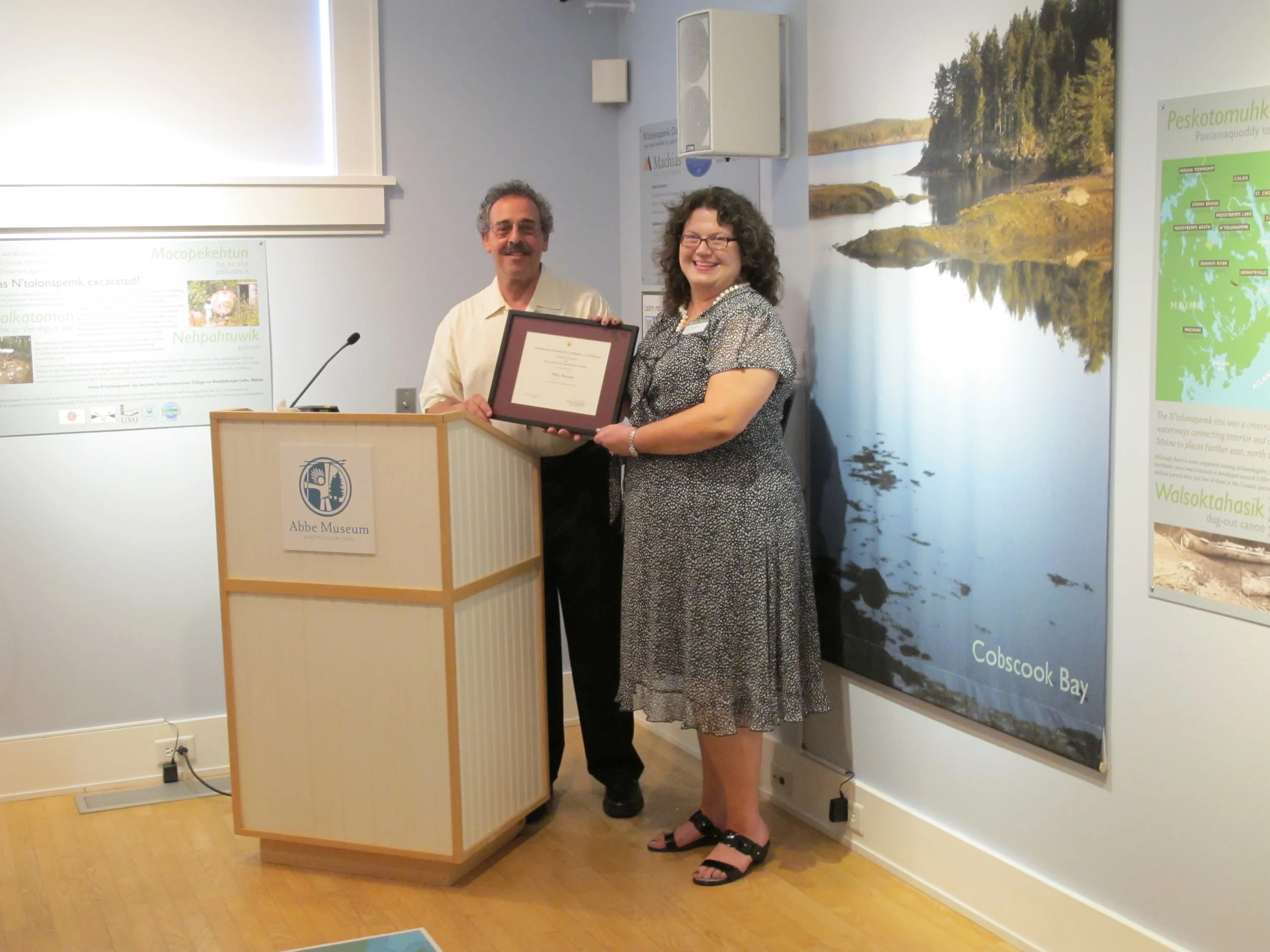October at the Abbe
/
When I started at the Abbe back in December, I hoped life would never be dull here, and my expectations were, in fact, exceeded—I’ve found creative and remarkable people, ingenious ideas, boundless energy, exciting programming, and stimulating exhibits. I am exactly where I’m meant to be—back home in Maine and working at an organization that not only inspires me every day, but one I believe in wholeheartedly. We're doing all this amazing, important work and I get to play a part in all of it!
And now it's October. One of the things that I haven't quite been able to grasp this year is the passage of time. 2015 has been going at such a fast clip, and the fact that it's October (my favorite month!) is slightly hard to believe. If you're feeling the same way I am, don’t despair—we have plenty to offer at the Abbe this month, including exhibitions, festivals, programming, and activities that will keep you entertained and engaged, whether you’re on a family outing or taking some “you” time to reflect and get inspired.

We're partnering with theMount Desert Island YMCA this year on a couple of programs, the first of which is Thursday, October 8th. The Children's Wabanaki Map Workshop, from 3:30 - 4:30 pm at the YMCA, will explore how Wabanaki people made story-like birchbark maps, orwikhikonik, using specific symbols that were used as forms of communication between two separated parties. You’ll be able to use a piece of imitation birchbark to tell a story of your choosing and create your own wikhikonik ! This workshop is free and open to the public.
For those of you traveling to Bar Harbor this weekend (October 10th), there's a LOT going on at the Museum. We have two festivals occurring— Bar Harbor Film Festival andBar Harbor Children's Book Festival —and afree Teacher's Workshop. Because of the all the activity, we'll be shuffling around some exhibits, which means not all the exhibits will be open this weekend. If you are hoping to see theWaponahki Student Art Show (which closes the end of this month), The Greatest Mountain, orLayers of Time, you might want to aim to come by on Monday, October 12th, when all three will be re-opened. And what better way to re-think Columbus Day than by coming to a Native American museum to celebrate Indigenous Peoples' Day!
We're also doing something this weekend that we haven't done in quite a while: admission will be by donation on Saturday the 10th and Sunday the 11th. Regular admission rates are $8 for adults and $4 for children ages 11 - 17; children 10 and under are free, as are Abbe members and Native Americans.

The inaugural Bar Harbor Film Festival kicks off at the Abbe on Friday evening, October 9th, at 6 pm and admission to the opening reception is free if youRSVP online. Check out theBHFF website for a full schedule of the weekend's film screenings and programs, and you can also purchase tickets for all of the Festival's events (there's different pricing depending on what you'd like to do). Or, stop by the Abbe Museum Shop and pick up your tickets in person.
Abbe Museum members get in free!
The Bar Harbor Children's Book Festival is free and open to the public, so please stop by between 11 am and 3 pm for some author and illustrator workshops.

Our free Teacher's Workshop on Saturday, October 10th from 8 am to 4 pm will focus on how contact with European cultures affects Wabanaki communities. Some of the topics that will be examined include French and British attitudes towards the Wabanaki, different ideals of land ownership and the problems this created, how Wabanaki culture had changed by the end of the
Revolutionary War, and where to find resources and how to evaluate them. Teachers will earn eight (8) Contact Hours for the workshop. To register, please contact Museum Educator Jen Heindel at jen@abbemuseum.org or call 207-288-3519.
On Thursday, October 15th, our annual film series is back, and this year’s theme focuses on the ideas ofContinuity, Change, and Resistance . The first film, Weaving Worlds, is a documentary about Diné (Navajo) rug weaving, and viewers will see one of the many perspectives on how Indigenous peoples in America have ensured economic and cultural survival through contemporary art. After the movie, join Museum Educators George Neptune and Jennifer Heindel for a discussion about the survival of traditions in the face of globalization. The film series is free and open to the public, and sponsored by Reel Pizza.

One of our most anticipated fall programs, Tea & Popovers Archaeology, will take place at the Jordan Pond House on Monday, October 19th from 7 - 9 pm. Our guest speaker this year is Chris Sockalexis, Penobscot Nation Tribal Historic Preservation Officer, and he'll present on the topic of petroglyph sites in Maine. This is a very popular evening and we've already filled a lot of seats! RSVP to 207-288-3519 or info@abbemuseum.org. The cost is $20 for Abbe members and $30 for non-members.




































